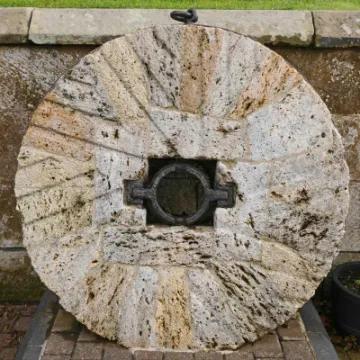







This is number 23 in the "History Shorts" articles contributed by members of the Audlem and District History Society under the Editorship of Jeremy Nicholls.
For centuries, the River Weaver was a source of power for watermills variously engaged in the grinding of corn, milling of cotton, working iron, grinding oak bark for the tanning industry, grinding bones for fertiliser and even generating electricity. A recent review of watermills in the ancient administrative area of the Nantwich Hundred*, roughly delineated by Chorley, Church Minshull, Barthomley and Swanbach, identified 60 mills operating on the river and its tributaries at various times.
Little Heath drain originally served Audlem Old Mill in Mill Lane north east of the village, and was eventually supplemented by Audlem Brook flowing from the Bunsley Bank direction. Audlem Brook also drove Swanbach Mill (Audlem New Mill) to the south of the village before flowing into the Weaver. A leat from the River Duckow, another tributary of the Weaver which rises near Calverhall, boosted the water supply to Swanbach Mill.
Audlem Old Mill probably dates from the twelfth century and was busy during the nineteenth century when it received grain via the Shropshire Union Canal. By 1870 a steam engine had been installed which, it is believed, augmented the power during the summer when water levels were low.
Swanbach Mill is thought to have dated from the thirteenth century: an undershot water wheel approximately 12 ft in diameter and 6' 6'' wide powered two pairs of mill stones.
Audlem Old Mill closed in 1916 when its owner, HK Burton, opened the oil-powered Kingbur Mill on the wharf by the canal, which continued working until 1970. Swanbach Mill closed in 1918: its capacity was limited by the availability of water, less grain was being grown locally and there was competition from Kingbur Mill.
Upstream of the confluence with the Duckow were Old Mill, Chelley and Brookes Mill, whilst, downstream, stands Hankelow Mill, said to have had: "The sweetest running wheel for many miles around".
* Nantwich Museum Research Booklet: "Landscape with Mills in the Nantwich Hundred".
Get In Touch
AudlemOnline is powered by our active community.
Please send us your news and views using the button below:
Email: editor@audlem.org







